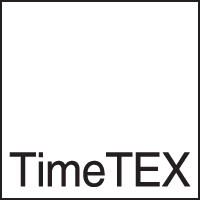Der Zahlenstrahl dient einem einzigen Zweck: Er stellt abstrakte Zahlenräume und Zahlen auf einer geraden Linie dar. Der Zusammenhang zwischen Zahlen wird damit verdeutlicht. Ein Zahlenstrahl ermöglicht Orientierung in großen Zahlenräumen, die ohne Hilfsmittel nicht mehr abzählbar sind. Der Zahlenstrahl erleichtert das Verständnis von Aufgaben zur Addition und Subtraktion. Kinder können so leicht das Rechnen ohne abzählen, üben und vertiefen! Weiterlesen…
-
 Lehrerbedarf
Lehrerbedarf
-
 Bürobedarf
Bürobedarf
-
 Kindergarten
Kindergarten
- Mathematische Frühförderung
- Informatik & Digitales
- Natur & Forschen
- Technik & Bauen
- Spielerisch Fördern
- Musik
- Kreatives Basteln
- Bürobedarf
- Geschenke
- NEU
- SALE
-
 Lehrmittel - Grundschule
Lehrmittel - Grundschule
- Mathematik
- Deutsch
- Englisch / Französisch
- Sachunterricht
- Lernwürfel
- Bewegtes Lernen
- Digitales Lernen
- fischertechnik education GS
- Medien
- Lernspiele
- Montessori Material
- Musik
- Sprachförderung
-
 Lehrmittel - Sekundarstufe
Lehrmittel - Sekundarstufe
-
 Forscherwerkstatt
Forscherwerkstatt
-
 Kunst & Kreatives
Kunst & Kreatives
-
 Aufbewahrung
Aufbewahrung
- NEU
- SALE %
Basis Mathematik: Der Zahlenstrahl
Der Zahlenstrahl dient einem einzigen Zweck: Er stellt abstrakte Zahlenräume und Zahlen auf einer geraden Linie dar. Der Zusammenhang zwischen Zahlen wird damit verdeutlicht. Ein Zahlenstrahl ermöglicht Orientierung in großen Zahlenräumen, die ohne Hilfsmittel nicht mehr abzählbar sind. Der Zahlenstrahl erleichtert das Verständnis von Aufgaben zur Addition und Subtraktion. Kinder können so leicht das Rechnen ohne abzählen, üben und vertiefen! Weiterlesen…
Was ist ein Zahlenstrahl?
Ein Zahlenstrahl ist eine von vielen Möglichkeiten zur Darstellung von natürlichen Zahlen. Die Zahlengerade ist unendlich ausgedehnt. Sie verläuft immer von links nach rechts. So können auch große Zahlenräume visuell dargestellt werden. Ein Mathe Zahlenstrahl vereinfacht Schülern die Vorstellung und Visualisierung von Zahlen.
In der Grundschule werden vorerst nur natürliche Zahlen betrachtet. Bei den Zahlenstrahl Übungen liegt der Startpunkt des Zahlenstrahl bei Null und endet bei je nach Klassenstufe bei 20, 100 oder 1000. Später wird die Zahlengerade um negative Zahlen erweitert.
Vor allem in Klasse 3 und Klasse 4 der Grundschule bietet sich ein Zahlenstrahl bis 1000 an, um Rechnungen und Rechenschritte zu visualisieren. Ab Klasse der 3 ist der Zehnerübergang gemeistert. Danach gibt es häufig nur noch Zahlenstrahle eingeteilt in Zehner Schritten.
Im Fach Mathematik erleichtert der Zahlenstrahl für die Grundschule Lehrer/innen das Erklären von mathematischen Sachverhalten. Bei Zahlenstrahl Übungen kann beispielsweise gezeigt und überprüft werden, welche von zwei Zahlen die größere ist. Auch Übungen zur Addition und Subtraktion können am Mathe Zahlenstrahl visualisiert werden. Damit erleichtert die Zahlengerade abstrakte Aufgaben mit großen natürlichen Zahlen. Der Zahlenstrahl kann ideal für verschiedene Übungen und Aufgaben rund um Zehnerübergang, Addition und Subtraktion bis hin zur Multiplikation genutzt werden.
Rechnen mit Zahlenstrahl in der Grundschule
Der Zahlenstrahl in der Grundschule ist besonders gut geeignet, um Kindern einen Überblick über unterschiedliche Zahlenräume zu verschaffen. Die Zahlengerade ermöglicht eine gute Orientierung innerhalb des Zahlenraums, egal ob dieser die Zahlen bis 20, 100 oder 1000 umfasst.
Vor allem wenn ein neuer Zahlenraum erschlossen wird, beispielsweise im Rahmen des Zehnerübergangs, ist es wichtig, dass sich die Kinder gut orientieren können. Zum Beispiel sollten sie ein Gefühl dafür entwickeln, wie groß die Abstände zwischen den einzelnen Zahlen sind und in welchem Verhältnis zueinander sich die natürlichen Zahlen befinden. Speziell mit Zahlenstrahl Übungen können Sie die Kompetenzen der Kinder im Fach Mathematik fördern!
Erste Einordnungen von Zahlen lassen sich beispielsweise im Rahmen von einfachen Suchübungen vornehmen. Hierbei sollen die Schüler vorgegebene Zahlen auf dem Zahlenstrahl suchen und farbig anmarkern. Als nächsten Schritt werden die Abstände zwischen den Zahlen auf dem Zahlenstrahl als ersten Schritt in Richtung Addition- und Subtraktion abgelesen. Diese Suchspiele machen den Kids Spaß und wecken Begeisterung für den Zahlenstrahl!
Zahlenstrahl Übunngen für Mathe in der Grundschule
Übungen zu Addition und Subtraktion bieten sich am Zahlenstrahl mit natürlichen Zahlen an. Bei Zahlenstrahl Übungen sollen die Kinder mit dem Lineal Pfeile auf der Zahlengerade ziehen. Die Länge der Pfeile sollte den einzelnen Summanden oder bei der Subtraktion den Minuenden und Subtrahenden entsprechen. Im Fall der Addition werden die Pfeile dann einfach miteinander verbunden. Das Ergebnis der Rechnung können die Kinder dann am Endpunkt des entstandenen Gesamtpfeils ablesen.
Bei der Subtraktion wird als erstes ein Pfeil, der in der Länge dem Minuenden entspricht, nach rechts entlang der Zahlengerade gezogen. Der Subtrahend, also die abzuziehende Zahl, wird als vom Endpunkt der ersten Linie ausgehender Pfeil dargestellt. Dieser Pfeil muss nach links gerichtet sein. Wieder lässt sich das Ergebnis einfach am Ende der finalen Linie ablesen.
Extra übersichtlich wird die Rechnung, wenn die Kinder die einzelnen Pfeile in unterschiedlichen Farben einzeichnen. Für noch mehr Übersichtlichkeit wird das Ergebnis in der gleichen Farbe markiert. Das macht die Übung am Zahlenstrahl in der Grundschule für viele Kinder auch deutlich spannender und abwechslungsreicher.
Später ist mit dem Mathe Zahlenstrahl auch eine langsame Heranführung an Aufgaben der Multiplikation möglich. Zum Beispiel durch die Übung „Rechnen mit 8er Schritten“. Bei diesen Zahlenraum Übungen wird eine Art Ketten-Addition angewendet. Bei dieser wird immer wieder der gleiche Wert aufaddiert. Die Schüler können dabei die entsprechende Anzahl an Punkten auf dem Zahlenstrahl einfach abzählen. Dann zeichnen sie beispielsweise einen geschwungenen Pfeil zu dem entsprechenden Punkt. Diese Übung findet ihre Entsprechung im Einmaleins.
Wie Sie merken, können mit dem Zahlenstrahl in der Grundschule selbst komplexere Sachverhalte visualisiert und verständlich erklärt werden!




















